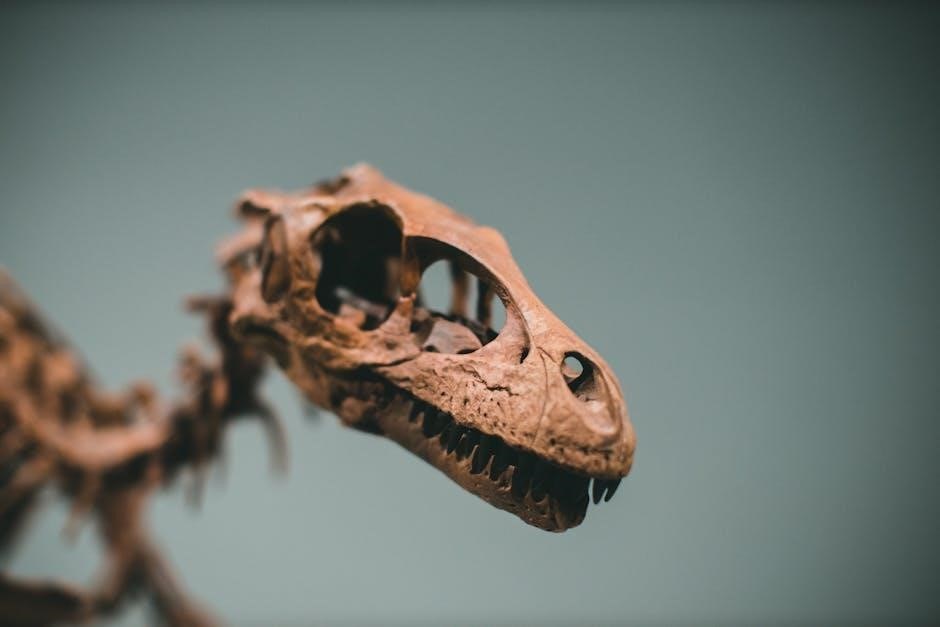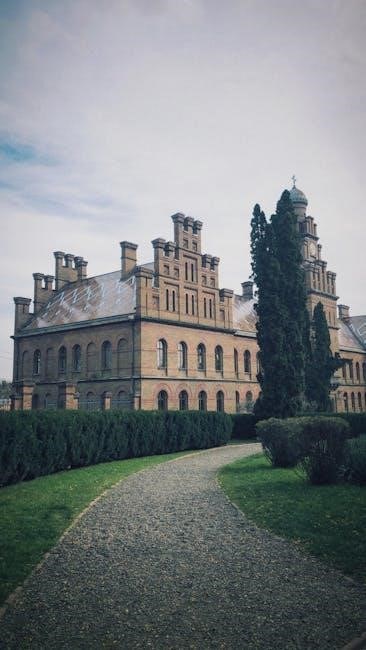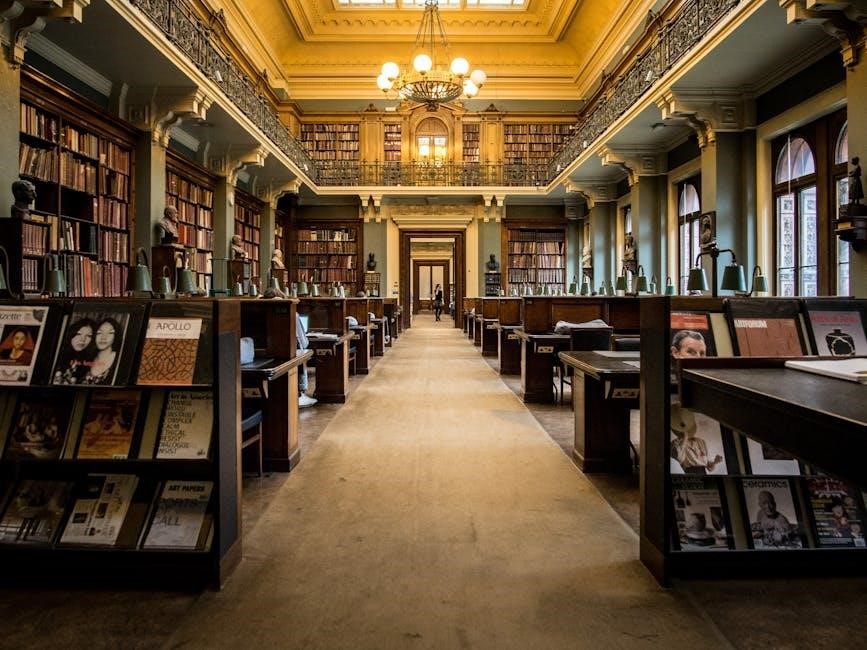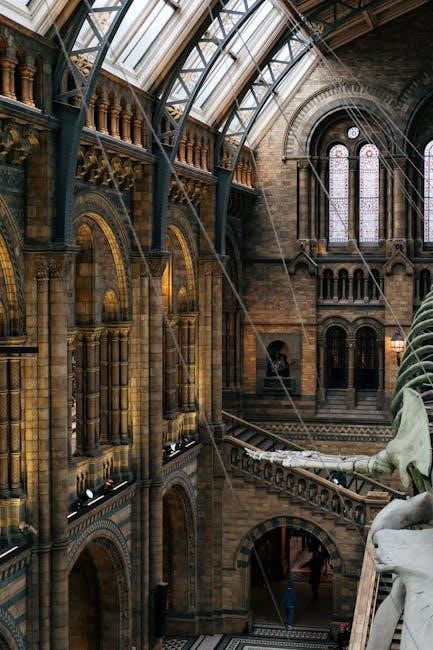Unit 2 explores civilizations from 600 BCE to 600 CE, focusing on empires, religions, and cultural exchanges that shaped global history, emphasizing their enduring legacies.
Overview of the Time Period: 600 BCE to 600 CE
This period, spanning 1,200 years, witnessed the rise and fall of empires, the spread of religions, and significant cultural exchanges. It saw the emergence of classical civilizations in China, India, the Mediterranean, and the Americas. Key developments include the Qin and Han dynasties in China, the Maurya and Gupta empires in India, and the Roman Empire in the Mediterranean. Religious and philosophical movements like Buddhism, Christianity, and Confucianism flourished. Trade networks, such as the Silk Road, connected regions, fostering technological and cultural diffusion. This era laid the foundation for modern global structures and ideas.
Key Themes and Concepts
Central themes include state-building and empire expansion, religious and philosophical developments, trade networks, and cultural exchanges. Concepts such as centralized governance, social hierarchies, and the impact of technological advancements are crucial. The spread of Buddhism, Christianity, and Islam, along with the rise of Confucianism and Hinduism, shaped societies. Understanding these themes provides insights into how civilizations interacted and influenced one another, forming the basis of modern global dynamics and cultural identities.
Importance of Understanding This Period
Studying this era is vital for grasping the origins of modern societies. It highlights how early civilizations laid the groundwork for political systems, religious beliefs, and cultural practices that persist today. Understanding these developments provides insights into global interconnectedness, the evolution of technologies, and the role of trade in shaping economies. This period’s legacy influences contemporary issues, making it essential for understanding historical and current global dynamics, fostering a deeper appreciation of cultural diversity and shared human experiences.
Classical Civilizations
This section explores classical civilizations in China, India, the Mediterranean, and the Americas, analyzing their empires, philosophies, and enduring legacies.
Classical China: Qin, Han, and Tang Dynasties
The Qin Dynasty (221–206 BCE) established a centralized empire, standardizing weights, measures, and writing. The Han Dynasty (206 BCE–220 CE) expanded borders and promoted Confucianism. The Tang Dynasty (618–907 CE) marked a cultural and economic golden age, fostering advancements in poetry, art, and trade. These dynasties laid the foundation for China’s bureaucratic systems, philosophical traditions, and cultural identity, leaving enduring legacies in administration, education, and global influence.
Classical India: Maurya and Gupta Empires
The Maurya Empire (322–185 BCE) unified much of India under a centralized administration, with Ashoka promoting Buddhism after the Kalinga War. The Gupta Empire (320–550 CE) marked a golden age of Indian culture, with advancements in mathematics, astronomy, and art. Both empires facilitated the spread of Hinduism and Buddhism, shaping India’s religious and intellectual landscape. Their decline led to regional fragmentation but left a lasting legacy in Indian philosophy, science, and governance.
Classical Mediterranean: Greece and Rome
Ancient Greece (8th–4th centuries BCE) laid the foundation for Western civilization, with city-states like Athens and Sparta fostering democracy, philosophy, and the arts. Rome (8th century BCE–476 CE) expanded these ideals, creating a vast empire that spread law, governance, and infrastructure. Both civilizations emphasized human potential, rational inquiry, and civic responsibility, leaving enduring legacies in politics, culture, and religion, including the rise of Christianity in the Roman Empire’s later years.
Classical Americas: Maya, Aztec, and Inca Civilizations
The Maya (2000 BCE–1500 CE) excelled in astronomy, mathematics, and urban planning, while the Aztecs (1325–1521 CE) built a vast empire centered in Tenochtitlán, emphasizing religious sacrifice and agriculture. The Inca Empire (1438–1533 CE) created a highly organized state with an extensive road network and administrative systems, relying on agricultural terracing and labor mit’a. These civilizations showcased advanced engineering, religious complexity, and sophisticated governance, ultimately declining due to external invasions and environmental challenges.

Trade Networks and Cultural Exchange
Trade networks like the Silk Road and Indian Ocean maritime routes facilitated the exchange of goods, religions, and ideas, connecting diverse civilizations and fostering cultural and economic growth.
The Silk Road and Its Impact
The Silk Road, a vast network of trade routes, connected China, Central Asia, and the Mediterranean. It facilitated the exchange of goods like silk, spices, and precious stones. Beyond commerce, it spurred the spread of religions such as Buddhism, Christianity, and Islam. Cultural ideas, technologies, and artistic styles were also shared, fostering cross-cultural understanding and enrichment. This network played a pivotal role in shaping global interconnections and civilizations during its peak.
Maritime Trade in the Indian Ocean
Maritime trade in the Indian Ocean connected East Africa, the Middle East, South Asia, and Southeast Asia. Goods like spices, textiles, and metals were exchanged, with monsoon winds aiding navigation. This network, facilitated by ports such as Muziris and Alexandria, fostered economic prosperity and cultural exchange. The spread of religions like Buddhism and Islam was also influenced by these maritime routes, creating a vibrant, interconnected system that shaped regional identities and global commerce during this period.
Spread of Religions and Ideas
Buddhism, Christianity, Islam, and Hinduism spread widely during this period. Trade routes and empires facilitated the exchange of religious and philosophical ideas. Missionaries, scholars, and travelers played key roles in disseminating these beliefs. For instance, Buddhism expanded through the Silk Road, while Christianity and Islam spread across the Mediterranean and beyond. These religions often blended with local cultures, creating diverse traditions and shaping societies’ moral, legal, and social frameworks, leaving lasting legacies in art, literature, and governance.

Political and Social Structures
Centralized empires and decentralized tribes coexisted, shaping governance and social hierarchies. Bureaucracies, monarchies, and caste systems defined roles, influencing daily life and cultural norms across civilizations.
Centralized vs. Decentralized Governments
In Unit 2, centralized governments, like the Qin and Han dynasties, relied on strong bureaucracies and emperors, while decentralized systems, such as feudal Europe, empowered local lords. Centralized systems promoted unity and efficiency but often faced rebellion. Decentralized systems allowed local autonomy but struggled with coordination. Empires like Rome and China exemplified centralized rule, while India’s caste system and African kingdoms showcased decentralized structures. Both systems influenced social stability and innovation.
Social Hierarchies and Caste Systems
Social hierarchies and caste systems played a pivotal role in shaping societies during this period. In India, the caste system divided people into rigid groups based on dharma, karma, and varna, influencing social, economic, and religious roles. Similar stratification existed in China, where Confucian ideals reinforced hierarchical structures. In contrast, Mediterranean societies like Greece and Rome emphasized citizenship and wealth-based hierarchies. These systems reflected cultural and religious values, often limiting social mobility and perpetuating inequality, while also defining communal responsibilities and expectations. Understanding these structures is crucial for analyzing the social dynamics of ancient civilizations.
Religion and Philosophy
Religion and philosophy shaped cultural identities, moral systems, and societal structures. Key developments include Buddhism, Hinduism, Confucianism, and the rise of monotheistic religions like Christianity and Islam, influencing global thought.
Buddhism, Hinduism, and Jainism in India
Buddhism emerged in ancient India, emphasizing the Four Noble Truths and the Eightfold Path to achieve enlightenment. Hinduism, rooted in the Vedas, evolved with diverse deities and the caste system. Jainism, another major philosophy, stressed non-violence and self-discipline. These religions shaped India’s cultural and moral frameworks, influencing art, society, and trade networks. Their ideas spread globally, leaving lasting legacies in spirituality and ethics, while adapting to regional practices and beliefs over time.
Confucianism and Daoism in China
Confucianism, founded by Confucius, emphasized morality, social harmony, and education, shaping China’s governance and interpersonal relations. Daoism, inspired by Laozi, promoted balance with nature and inner peace through concepts like the Tao. Both philosophies deeply influenced Chinese culture, politics, and daily life, offering distinct paths to understanding the world and human destiny. Their teachings endured, shaping East Asian thought and practices for centuries, while adapting to changing societal needs and intellectual trends over time.
Christianity, Judaism, and Islam in the Mediterranean
Judaism, Christianity, and Islam emerged as major religions in the Mediterranean, each shaping distinct cultural and spiritual identities. Judaism, the oldest, emphasized monotheism and covenant with God. Christianity, rooted in Jesus’ teachings, spread widely after Constantine’s conversion. Islam, founded by Muhammad, expanded rapidly, uniting diverse regions under Islamic law. These religions influenced art, politics, and society, fostering both coexistence and conflict. Their shared Abrahamic heritage and theological debates defined the Mediterranean’s spiritual landscape during this period.

Technological and Scientific Developments
Innovations like the wheel, concrete, and calendars revolutionized daily life and empire-building. Advances in metallurgy, agriculture, and engineering spurred economic growth, while breakthroughs in astronomy and mathematics laid the groundwork for future scientific progress.
Advances in Agriculture and Engineering
Technological innovations like the iron plow and advanced irrigation systems boosted agricultural productivity, enabling population growth. Engineering marvels, such as Roman aqueducts and China’s Great Wall, showcased architectural prowess. The wheel revolutionized transportation and machinery, while concrete and metallurgy advanced construction and tool-making. These developments not only enhanced daily life but also supported the expansion of empires and facilitated trade, laying the foundation for future technological progress and societal complexity.
Scientific Discoveries in Astronomy and Mathematics
Astronomical advancements, such as the development of calendars and planetary observations, were crucial during this period. The Julian calendar exemplified Roman astronomical knowledge, while Chinese scholars meticulously recorded solar eclipses. In mathematics, Indian scholars introduced the decimal system and concepts like zero, revolutionizing global numeracy. Greek mathematicians, including Euclid, laid the groundwork for geometry. These discoveries not only expanded human understanding but also laid the foundation for future scientific and technological progress, influencing centuries to come.

Comparative Analysis
Comparing empires and societies reveals shared and unique political, social, and cultural patterns, aiding in understanding global interactions and divergences during this period.
Comparing Empires: Rome, China, and India
The Roman Empire, China, and India each developed distinct political and social systems. Rome emphasized republicanism and law, while China relied on centralized bureaucracy. India’s caste system shaped social hierarchies. Economically, all depended on agriculture but traded extensively. Religiously, Rome adopted Christianity, China embraced Confucianism, and India nurtured Hinduism and Buddhism. Technological advancements varied, with Rome excelling in engineering and China in inventions like the Great Wall. Military strategies also differed, reflecting regional priorities and resources.
Cultural Exchange vs. Regional Isolation
Cultural exchange flourished via trade networks like the Silk Road and maritime routes, spreading ideas, religions, and technologies. However, regional isolation also occurred due to geographical barriers or political choices. While empires like Rome and China engaged in extensive trade, others, such as Japan, maintained relative isolation, preserving unique cultural identities. This duality shaped the development of distinct civilizations while fostering global connections, highlighting the complex interplay between exchange and isolation in shaping historical trajectories.
Study Tips and Review Materials
Focus on memorizing key terms, practicing essay prompts, and utilizing online resources. Engage with study groups, use digital flashcards, and review past exams for comprehensive preparation.
Key Terms and Concepts to Memorize
Focus on major empires like the Qin, Han, Maurya, Gupta, and Roman Empires. Understand key religions: Buddhism, Hinduism, Confucianism, and Christianity. Review trade networks such as the Silk Road and Indian Ocean maritime routes. Memorize technological advancements like the compass and paper production. Study social structures, including caste systems and centralized governments. Key concepts include syncretism, diffusion, and the impact of environmental factors on civilizations. Regularly review these terms to build a strong foundation for essays and multiple-choice questions.
Practice Questions and Essay Prompts
Engage with practice questions that test knowledge of empires, trade, and cultural exchanges. Essay prompts may ask to compare empires like Rome and China or analyze the spread of religions. Regularly practice writing clear, evidence-based essays. Use past exams and study guides to refine your skills. Focus on understanding historical context and causation. Time yourself to simulate exam conditions, ensuring you can articulate your ideas effectively within the allotted time. This practice will enhance your ability to tackle complex prompts confidently.
Recommended Resources for Further Study
Supplement your studies with textbooks like Traditions & Encounters and online platforms like Khan Academy and Crash Course. Utilize the College Board’s official study guides and practice exams. Explore primary sources through the World History Association. Engage with digital tools like Brainly for problem-solving and Cambridge English resources for analytical skills. These resources provide comprehensive coverage and interactive learning opportunities to deepen your understanding of Unit 2 topics.

